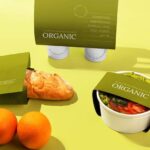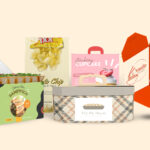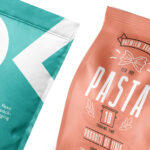In the dynamic world of marketing, understanding the role and impact of product brochures is crucial for marketing professionals. Whether you’re launching a new product or reinvigorating an existing one, crafting detailed and enticing product brochures can significantly influence your audience’s perception and decision-making. In this comprehensive article, we’ll delve into numerous aspects of creating effective product brochures, tailoring them for diverse audiences, and leveraging their potential in your marketing strategy.

What Are Product Brochures?
A product brochure is a printed or digital document that provides detailed information about a product or service. It’s a versatile tool often used in brochures marketing to attract potential customers, inform existing customers, and support sales efforts. Whether in physical or digital format, the design and content of a product brochure should be both appealing and informative.
Importance of Product Brochures in Marketing
Product brochures are essential because they serve as a tangible representation of a product or service. They help in conveying vital product details, benefits, and usage, all while aligning with your brand’s aesthetics and values. They are a powerful tool in converting potential leads into actionable sales through well-articulated information and visuals.
Key Benefits of Using Product Brochures
- Informative Content: Offers in-depth information about product features and benefits.
- Cost-Effective: An affordable marketing tool for reaching a broad audience.
- Versatile: Usable in various formats and settings.
- Supports Branding: Enhances brand recognition and trust.
The Psychology Behind Effective Product Brochures
An understanding of consumer psychology can vastly improve the effectiveness of product brochures. Engaging visuals, concise messaging, and a clear call-to-action can guide potential customers from awareness to action. Here are some elements that make product brochures resonate with audiences:
- Aesthetic Design: Reflects brand identity and attracts attention.
- Emotional Appeal: Connects with the customer’s values and needs.
- Logical Layout: Provides information in a clear and structured manner.
How to Design an Effective Product Brochure
Designing a product brochure requires careful planning and creativity. From selecting the right colors and typography to crafting compelling content, every element should work in harmony to serve its purpose. Here are steps to create impactful product brochures:
1. Understand Your Audience
Your brochure should be tailored to resonate with the specific demographics and preferences of your target audience. Understanding their needs, interests, and pain points will guide the design and messaging of your product brochure.
2. Create a Strong Visual Impact
Visual elements are a key aspect of any product brochure. High-quality images, coherent color schemes, and an intuitive layout are essential in capturing and maintaining the reader’s attention. Consider using professional design tools or seeking expert help to enhance the visual appeal.
3. Craft Compelling Copy
Clear, concise, and persuasive language is essential in a product brochure. Highlight the benefits of your product and include a clear call-to-action that guides your reader on the next steps. The content should be engaging and free from jargon.
4. Focus on Quality
Use high-quality materials whether your product brochure is printed or digital. The quality of your brochure often reflects the quality of your product or service, so invest in good printing services or digital platforms.
Different Types of Product Brochures
Understanding the types of product brochures can help you choose the best format to match the needs of your campaign:
- Bi-Fold Brochures: Classic and simple, ideal for a brief overview.
- Tri-Fold Brochures: Offers more content space while maintaining a compact form.
- Z-Fold Brochures: Provides an eye-catching layout with extensive content options.
- Digital Brochures: Interactive and easily shareable online versions.
Incorporating Product Brochures in Your Marketing Strategy
Product brochures should be seamlessly integrated into your broader marketing efforts. Here are some strategies:
Combine Product Brochures with Digital Marketing
In todays digital age, pairing your product brochures with digital marketing techniques, such as email campaigns and social media promotions, can increase their reach and impact. Offering downloadable brochures on your website is a great way to engage online audiences.
Using Brochures in Events and Trade Shows
Product brochures are invaluable in face-to-face marketing settings like trade shows and conventions. These environments allow for direct communication and distribution of brochures supporting real-time interaction.
Success Stories: Brands Leveraging Brochures Effectively
Many successful brands have leveraged product brochures to enhance their market presence. Companies like Apple and IKEA use high-quality and visually appealing brochures to effectively convey their brand image and product details.
Challenges in Creating Product Brochures
Creating a compelling product brochure isnt without its challenges. From design difficulties to content creation and printing logistics, each step needs careful attention. However, these challenges can be mitigated with thoughtful planning and resource allocation.
Overcoming Common Brochure Design Mistakes
To avoid typical pitfalls in brochure design, ensure clarity in your visual and textual elements. Engage your audience with high-quality images and intuitive layouts while avoiding clutter and overly complex details.
Measuring the Effectiveness of Product Brochures
The success of a product brochure can usually be gauged by tracking consumer engagement and sales performance. Feedback from sales teams and direct customer responses can provide valuable insights into how well your brochures are performing.
Collecting Customer Feedback
Customer feedback allows you to refine and adjust your brochures to improve clarity and impact. Surveys and direct interviews post sales can help gather this vital information.
Future Trends in Product Brochures
As technology evolves, so does the potential of product brochures. Digital innovations such as augmented reality (AR) and interactive content are expanding the horizons for brochure design and functionality.
The Rise of Interactive Brochures
Interactive digital brochures allow for a deeper level of engagement, offering features such as clickable content, video integration, and animation, which enhance the user experience and keep readers engaged longer.
Integrating Print and Digital Brochures
While digital brochures are on the rise, print brochures still hold a treasured place in marketing strategies due to their tactile nature. A balanced integration of both formats can yield maximal reach and impact across different audience segments.
Conclusion: The Ongoing Relevance of Product Brochures
Despite the rise of digital media, product brochures remain a relevant and influential part of the marketing mix. Their ability to provide detailed product information, support brand development, and enhance customer engagement underscores their continued importance in comprehensive marketing strategies. For those seeking to boost marketing outcomes, investing in high-quality and well-crafted product brochures is a strategic decision. For more information on how to effectively use labels in your strategy, you can refer to label digital photos and make labels stick better for additional insights.

FAQ Section
What materials are best for printing printed brochures?
High-quality gloss or matte paper is often used for printing product brochures to enhance durability and visual appeal.
How can I measure the success of my product brochures?
Track consumer engagement, gather sales data, and solicit feedback from users to understand the effectiveness of your product brochures.
What is the difference between digital and print brochures?
Digital brochures offer interactive features and are more easily distributed online, while print brochures provide a tangible product and are effective in face-to-face marketing.
This article contains affiliate links. We may earn a commission at no extra cost to you.






